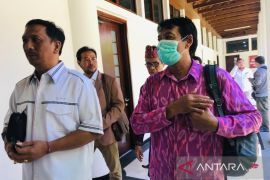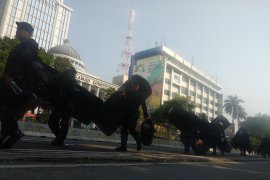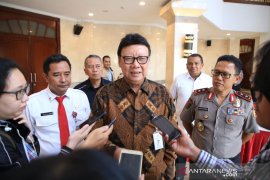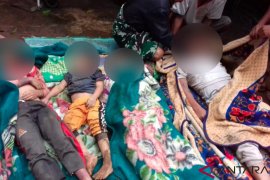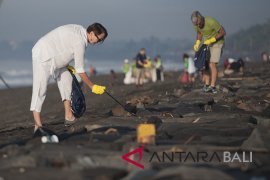Jakarta (Antaranews Bali) - The Head of the Geology Agency at the Ministry of Energy and Mineral Resources, Rudy Suhendar, said the agency is trying to map Indonesia`s territories with high disaster potentials.
"Basically, from Sumatra, Java, Bali, Nusa Tenggara, and Maluku to Papua, all of them have the potentials for disasters, commonly earthquake because they are located on a long fault line," Suhendar said here Wednesday.
However, according to him, the intensity of earthquake is different between one area and another depending on the geological conditions of each place. People are expected to monitor the fault lines and find out if their area is directly traversed by the faults.
"The map on fault lines can be seen on the geology page of the Ministry of Energy and Mineral Resources. If we know these fault lines in advance, disaster mitigations can be done; for instance, by not building houses with heavy materials," he stated.
Suhendar explained that time, location, and magnitude of an earthquake cannot be predicted. "So far, what can be predicted from an earthquake is its maximum magnitude, potential, and intensity," he explained.
"Regarding the earthquake and tsunami that occurred in Palu and Donggala, let us all pray there would be no more major earthquakes. However, people are expected to remain vigilant about aftershocks. People should also keep following the directives from authorized institutions and not believe any news from unclear sources," Suhendar added.
The cause of earthquakes in Indonesia comes from subduction zones and active faults on land. The subduction zones stretch from west of Sumatra Island, south of Java Island, south of Bali, and Nusa Tenggara and turn to Maluku Islands to form sea trenches.
Subduction zones can also generate to form tsunami.
The active faults on lands include the Sumatran Fault, which extends from north to south on Sumatra Island. In Java Island, there are Cimandiri Fault, Lembang Fault, Baribis Fault. and Opak Fault.
"Besides that, there are Flores Back Arc Faults in North Nusa Tenggara Islands, Palu-Koro Fault in Central Sulawesi, Tairura-Aiduna Fault, Sorong Fault, and others," he noted.
Earthquake still cannot be predicted. However, there are some efforts that can be made, including delineating active tectonic areas that generate earthquakes, estimating the return period of the earthquakes, determining the parameters of each earthquake, and calculating maximum potentials.
The Geology Agency continues to make efforts to mitigate disasters by mapping areas that have been hit by tsunami. The maps are presented in maps of earthquake- and tsunami-prone areas.
The Map of Disaster-Prone Areas of Earthquakes and Tsunamis are routinely socialized to all local administrations.
Regarding the earthquakes that hit Central Sulawesi province, the Geological Agency has made the Map of Earthquake-Prone Areas of Central Sulawesi, Map of Earthquake and Tsunami-Prone Areas of Palu Bay, and Microzonation Map of Palu Earthquake.
"All parties must be alert and ready to face earthquakes and tsunami that could take place in any place and at any time. Spatial planning should be made by considering the disaster potentials, and all buildings and infrastructures must consider seismic aspects. These are some of the mitigation efforts to reduce risks of geological disasters," he pointed out. (WDY)
Geology agency to map Indonesia`s disaster-prone areas
Pewarta : Reporting by Afut Syafril Nursyirwan 4 Oktober 2018 10:09 WIB
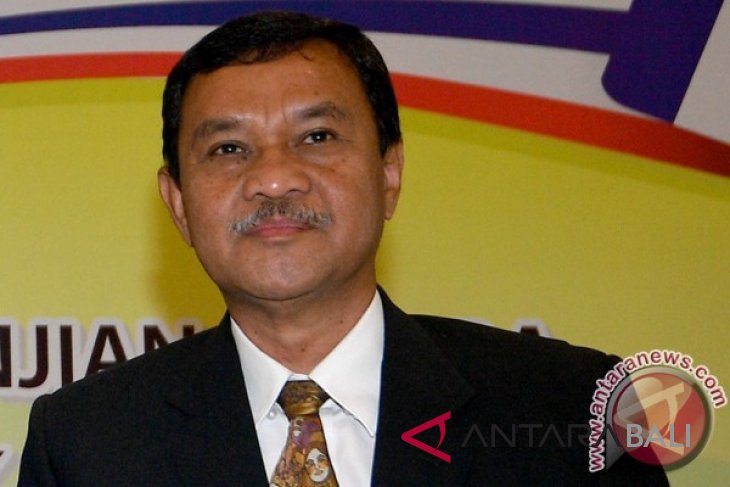
The Head of the Geology Agency at the Ministry of Energy and Mineral Resources, Rudy Suhendar. (ANTARA FOTO/Sigid Kurniawan)


